 A garden shed is a often used to store gardening equipment and yard tools where they are needed. However, you can also build a decorative garden shed and make it part of the landscaping and design element of the garden. To make the garden shed a focal point of interest in your garden, you need to make it attractive and match the landscaping design of your garden.
The best way to do this is to build a basic garden shed and customize it or decorate it with a bird house on top, a living roof of moss or other plants, allocate part of the shed for a greenhouse, rabbit hutch, or chicken coop. You can incorporate multiple variations on the basic theme.
A garden shed is a often used to store gardening equipment and yard tools where they are needed. However, you can also build a decorative garden shed and make it part of the landscaping and design element of the garden. To make the garden shed a focal point of interest in your garden, you need to make it attractive and match the landscaping design of your garden.
The best way to do this is to build a basic garden shed and customize it or decorate it with a bird house on top, a living roof of moss or other plants, allocate part of the shed for a greenhouse, rabbit hutch, or chicken coop. You can incorporate multiple variations on the basic theme.
 A garden shed is a often used to store gardening equipment and yard tools where they are needed. However, you can also build a decorative garden shed and make it part of the landscaping and design element of the garden. To make the garden shed a focal point of interest in your garden, you need to make it attractive and match the landscaping design of your garden.
The best way to do this is to build a basic garden shed and customize it or decorate it with a bird house on top, a living roof of moss or other plants, allocate part of the shed for a greenhouse, rabbit hutch, or chicken coop. You can incorporate multiple variations on the basic theme.
A garden shed is a often used to store gardening equipment and yard tools where they are needed. However, you can also build a decorative garden shed and make it part of the landscaping and design element of the garden. To make the garden shed a focal point of interest in your garden, you need to make it attractive and match the landscaping design of your garden.
The best way to do this is to build a basic garden shed and customize it or decorate it with a bird house on top, a living roof of moss or other plants, allocate part of the shed for a greenhouse, rabbit hutch, or chicken coop. You can incorporate multiple variations on the basic theme.
 A pergola in your backyard can help you enjoy your garden from the shade. This enables you to spend time in the outdoors on sunny afternoons without getting sun burnt or having to stay cooped up indoors.
A pergola is a beautiful way of ensuring that you obtain adequate shade in the garden without marring the beauty of your garden. It can be built over a garden path, to provide seating, or provide shade for a dining table. You can have one built for you or you can purchase any number of pergola kits for sale online.
A pergola in your backyard can help you enjoy your garden from the shade. This enables you to spend time in the outdoors on sunny afternoons without getting sun burnt or having to stay cooped up indoors.
A pergola is a beautiful way of ensuring that you obtain adequate shade in the garden without marring the beauty of your garden. It can be built over a garden path, to provide seating, or provide shade for a dining table. You can have one built for you or you can purchase any number of pergola kits for sale online.
How to Build a Pergola Step by Step
The information provided here will help you build a pergola step by step. Your pergola will be large enough to hold a dining table, but the same plan with narrower dimensions can be used to create a smaller pergola. As for materials, you can use 2×8 and 6×6 lumber for building these pergolas. Alternatively, you can use lumber that is slightly thicker or thinner or used peeled poles for constructing your pergola.- Fixing the Posts The first step is to dig six post holes in the ground, make three of the holes on each longer side to support the pergola. Each post hole should be 24 to 48 inches deep. Now place the 6 x 6 posts that should be between 12 and 14 feet long in each of the post holes and prop them up temporarily using 2 by 4 braces. Now fill all the post holes and tamp down the soil firmly. This pergola does not require concrete; instead use a long piece of wood to compact the soil around the posts.
- Aligning the Posts Now align the height of the posts and cut away the excess wood. This is easier than digging holes of the same depths. This can be done by measuring one post at eight feet, cutting it and cutting the other posts to the same height. After that make pyramid cuts at the top of the posts since this makes the pergola look even sharper.
- Fasten the Cross Beams Now fasten the three 6 by 6 cross beams across to the posts. Next, you need to measure the distances between the outer faces of the posts and cut the three main cross beams to span them. When cutting these cross beams leave an additional 12 and a half inches for overhang and trim the ends in a pyramid shape. Place the crossbeams over the posts and mark the places where the post and crossbeam overlaps.
- Make Lap Joints Now, you need to shape the lap joints on the crossbeams. For this cut the wood at the place where it overlaps the post to the same dimensions as the post to ensure that the two pieces of lumber fit together tightly ad securely. The interlocking notches that form the lap joints can be made by first making small cuts using a circular saw and then knock out the remaining wood pieces using a chisel and mallet. Now, you need to place the crossbeams in position and bore half inch diameter holes through the crossbeam and post. The two pieces of lumber are secured using galvanized carriage bolts inserted through the holes.
- Place the Roof Boards The roof boards can now be placed. These are the 2 by 8s which should be placed over the crossbeams. You can make the pergola more attractive by cutting a decorative edge to the boards. The boards should also have holes cut into them to take 10 inch screws.
- Optional Lattice Panels Once the roof is in place you can install lattice panels as walls of the pergola. These are not necessary in all pergolas, but add a nice touch and provide privacy. You can use a dado blade in your table saw to cut the 1 and half inch by one and half inch groves or a handheld circular saw to make the grooves. The lattice can be held temporarily in place using deck screws. Now, you can pre-drill and fix quarter inch galvanized carriage bolts and remove the deck screws as you do this.
- Apply a Finish The next step is to apply a finish by staining the wood or painting it. Depending on your preferences you can also allow the wood weather naturally for a unique look.
- Final Steps To ensure that the pergola provides adequate shade you can either drape it with a shade cloth or plant vines and other plants around it. These vines can be trained onto the pergola to add color and beauty to it and the garden. If you paint or stain the pergola the wood needs to be treated each year, while the weathered option requires less maintenance. By planting flowering vines and small shrubs around the pergola you can add color and shape to the garden as well as an interesting feature that will be both attractive and functional.
 Almost everybody would like to enjoy some time in the outdoors each day. Many people are looking for small outdoor space ideas to make the most out of their backyard. With some clever techniques, it is possible to maximize your small yard and still have a magnificent garden to enjoy.
Almost everybody would like to enjoy some time in the outdoors each day. Many people are looking for small outdoor space ideas to make the most out of their backyard. With some clever techniques, it is possible to maximize your small yard and still have a magnificent garden to enjoy.
Go Vertical
Just as you would go vertical when you lack space indoors, you can go vertical outdoors as well to create a garden and surround yourself with some greenery. A vertical garden can be as expensive or as inexpensive as you want it to be. Select a sturdy wall or fence for your vertical garden. If the wall or fence is not strong enough to bear the weight of your vertical garden, the first step should be to reinforce it using marine ply or similar weather and water proof material. Next, attach a series of small pots to the wall using galvanized screws. It is now possible to get pots for a vertical garden with a hose system that will deliver water to the pots. When selecting plants for the vertical garden, keep in mind that pots dry out faster than a garden plot. Choose plants that will thrive in dry soils and you will soon have a glorious vertical garden. Select plants that require plenty of sunlight if your vertical garden receives a lot of exposure to the sun. Plants such as succulents are ideal for this. On the other hand, if your vertical garden will not receive sunlight for more than a couple of hours, select tropical plants with large leaves, and colorful flowers. Add layers and texture to the vertical garden by selecting a combination of plants to add visual interest. You can have a mix of plants in your vertical garden as long as they are placed to receive the right amount of sunlight and shade. A key requirement for a thriving vertical garden is adequate soil nutrients. As the plants are potted, you need to ensure that they receive all the nutrients they require by adding compost, mulch, and fertilizers are more frequent intervals than for a garden plot.Build in the Seating
If your yard is small, flip the switch for built-in seating that can also double up as storage areas, dividers, and so on. This will keep your yard free of the movable furniture that takes up more space. When building this type of seating, select materials such as natural woods or stone that will withstand the effects of water and sunlight.Multitasking Counters and Spaces
Another way of maximizing the small yard is to ensure that every space can be used for multiple purposes. Depending on your needs, you should be able to convert the space into a play area for your children or a place to entertain guests. This is possible by designing seating and counters that can be used by both adults and children. For instance, a counter top that children use as a work surface during the day for their art material should be usable as a counter to place drinks and snacks in the evening. Choosing colors and materials that will appeal to both children and adults is key to this.Remove Excess Plants, Furniture
If the yard is small, too many plants can create visual clutter. Instead, you need to work to reduce this effect by pruning the plants and rotating the pots. An easy way of keeping only the seasonal plants in the yard is to use the two-pot method. Simply, place an empty pot in the hole you have dug in your yard and place the potted seasonal into this. As the seasons change, you will be able to remove the potted plant and replace it with ease. This will enable you to have a beautiful garden and seating area while resting the other pots in out of sight places.Select Larger Pavers
When paving the seating area of a small yard, select larger, plan pavers that enlarge the space visually. Leave intricate designs and dark colors for a larger yard.Install a Bird Feeder or Bird Bath
Even a small yard can be made more welcoming not just to the residents but birds, by installing a bird feeder and bird bath. This will encourage birds to visit your garden and add to the harmony of the place. A hanging birdfeeder and a small bird bath can easily be fitted into most small yards. The bird bath can also be installed in the vertical garden with ease, ensuring that your winged visitors feel more at home. By taking these steps it is possible to convert even a small yard into a gorgeous garden that is an oasis of nature. The greenery and flowers are sure to make the garden an inviting spot for all.How to Receive Small Packages
So, you order a product online, exciting! The carrier (UPS, FedEx, Postal Service, etc,) is going to deliver it and all is well that ends well! Well, sometimes it does, sometimes it doesn’t. Taking time to research the company’s shipping and delivery conditions is the key to a good buying experience.
If the instructions are unclear always call the company and ask. Having placed, paid, and shipped the order does not guarantee transit times or delivery to your actual location, where on your property the order will be placed, or who and how it will get off the truck.
If you live in a remote area or even a small street, imagine yourselves driving in a large truck getting to your location, and delivering the order within a given 15-20 minute timeline. The important questions to ask are: Is the transit time guaranteed? Do carriers call before small package deliveries? Where on my property will the carrier deliver my package? How will it get off the carrier truck? How do I check for damages? Who is responsible for damages?
Is the transit time guaranteed?
Most freight companies set an internal goal to achieve their stated transit times and strive to get it there in the allotted time. They will tell you that they can deliver a certain size package within so many days from point A to point B. There are different levels of service depending on the urgency of the delivery and have various price tags attached to those services. Most often that works out. But, even if you have paid for the fastest service, bear in mind that transit times are never 100% guaranteed.
Weather, Customs or destination location challenges can always delay transportation and delivery and your money paid or lost contractor times will not by reimbursed. Before ordering, check the transit services offered with the seller, discuss a realistic delivery date and most importantly order with plenty of time to spare!
Do carriers call before small package deliveries?
The seller should offer a tracking number for your shipment which can be tracked online and you can find out when the actual delivery will occur. These types of carriers do not usually call before they deliver. Either way, make sure you offer the phone number you can best be reached at, at the time of ordering your product. This way if the driver runs into any problems they can reach you immediately and get further instructions.
Where on my property will the carrier deliver my package?
Most often courier deliveries will be made right to the door, porch or garage. Make sure you have a clear path for the truck and driver to manoeuver your package onto your property. Be aware what day your shipment will arrive and expect it to be at your door the day you come home.
How will it get off the carrier truck?
Many of us order items online and expect them to be ‘just delivered’. Unfortunately, not every delivery is the same. Even though your order is accepted and shipped, the driver may not be able to get it right to your front door.
The obligation to deliver can quickly end if the driver cannot even get onto your street. Keep your tracking number and the carrier’s phone number on hand and check with the shipping company if there are any restrictions if you don’t see your parcel at your door on the day of the delivery.
How do I check for damages?
Upon receiving it, be sure to check all the address labels and confirm that the shipment was truly intended for you. Count the parcels and make sure you received all the packages included with your shipment. Most often it will say Box 1 of something. Walk around the packages, check for corner damages, dents, rips and most of all all the staples and tape still secured tightly to the package. Turn the package over and repeat.
Take pictures, make notes, and copy down the tracking number. In case of damages, call the carrier, give them the tracking number on the boxes, and advise them that you have found damages. Call the seller next and advise them of the same, offer them pictures, and ask them what the next step is.
Who is responsible for damages?
That is a good question to ask when placing an order. Every carrier has a different shipping agreement and insurance values with the seller. A good seller will require the notification of damage and take care of the claims process themselves. You should be sent replacement parts or a new product free of charge as you have done your due diligence.
You open your package and it is damaged
Now you have done your due diligence in receiving the product. You open it, excited to enjoy and realize the contents is damaged. Call the seller and tell them what happened. If it is a reputable company, they will do their utmost to rectify the situation.
 Sometimes it makes sense to hire a contractor rather than take on a project yourself. But it is important to find the right one as picking the wrong one can result in subpar work, delays, and even legal issues. Choosing the right professional can make all the difference between a job that is done right and a total disaster.
Whether it is building a gazebo or pergola or making renovations indoors, you need to find and hire a contractor that is reliable and competent so that you get a professional who will give you quality performance from start to finish.
Sometimes it makes sense to hire a contractor rather than take on a project yourself. But it is important to find the right one as picking the wrong one can result in subpar work, delays, and even legal issues. Choosing the right professional can make all the difference between a job that is done right and a total disaster.
Whether it is building a gazebo or pergola or making renovations indoors, you need to find and hire a contractor that is reliable and competent so that you get a professional who will give you quality performance from start to finish.
Tips to Find and Hire the Best Contractor
There are steps that you can take to ensure that you find the right contractor and the job gets done right, such as:- Go with your instincts: While changing your home’s looks and functionality, a contractor could be in your home and around your family for a long time, sometimes even months. According to experts, if there is something about a contractor you do not like, you should not hire them. You need to trust the person you hire 100 percent, so always go with your guts.
- Hire a licensed, bonded and insured contractor: When a contractor is licensed and insured, it demonstrates their credibility and knowledge. The license shows that they have taken an exam and know the required building codes and processes. Also, if a contractor is not insured and a worker gets injured while working on your project, you could be liable. So make sure that you get proof of license and insurance and that the contractor is bonded.
- Choose a contractor that specializes in your type of project: You should always research contractors to find out if they have experience in the type of project you require for your home. Nowadays, many projects are code-specific and regulated, which is why you need someone who has knowledge of the required details. Finding a specialist will ensure that all potential problems are addressed and prevented and the work gets done correctly.
- Have a detailed contract before the project begins: It is important that you draw a detailed contract that covers everything including costs, approximate start and finish dates, brands of items that will be installed and a complete set of drawings with written specifications. When you make sure that there is an upfront agreement, there are no surprises later.
- Find out who will perform what on the job: You should find out if the project will be done by the contractor or if it will be given to a subcontractor. Some projects like building gazebos and other outdoor structures, renovating kitchens or bathrooms, etc. can involve multiple subcontractors and there are specialty jobs that general contractors subcontract to other professionals. Sometimes this is a sunny aspect as subcontractors have a more thorough knowledge of the job they will be performing.
- Provide guidelines for working in your home: Before you hire a contractor, provide guidelines for working in and around your property. If there are certain times that you do not want workers in your home, you do not want them to use your bathroom, you should enable the contractor to know at the start as they may not accept the job based on your parameters. It is important to let your contractor know your expectations and limits.
- Know your responsibilities: You should know what your responsibilities are or what the contractor expects of you before hiring one. For example, some professionals do move items before starting a project because they do not want to be responsible for broken valuables. You should hold a meeting with your contractor before the project starts so that you can discuss your roles and responsibilities.
- Find out about mechanic’s lien laws: In some states, under the mechanic’s lien laws, a lien can be placed on your home by any person who worked on or provided supplies for your project and is not paid. This means that even if you have paid your contractor, but he has not made payment to the lumberyard, you can be liable for that bill. Check every contractor’s legal status before hiring them to avoid messy situations later.
- Check out work samples: It is sometimes more important to look at samples than references as they allow you to see the handiwork of a contractor and the quality of their work. It may spark some ideas for your project as well. Checking out the contractor’s past work also allows you to see the variety of work they have performed.
- Check out area contractors: Local contractors who have been in the business for many years are usually the safest and most reliable options for projects. If their work within your community was not good, they would not still be in business. Experts say that looking for local professionals is best as the contractor is involved in the community and it is likely that the workers are local as well. If any problem arises later, you can be sure that a local contractor will quickly work to get it fixed. They value their reputation in the area.
 A shed is usually a structure to have in your garden. While your garden shed can withstand and endure spring, summer, and fall effortlessly, it does require some help to endure the harsh winter months. You will be using your garden shed less in the winter and hence, you will not know of any seasonal damage until spring. So it is an astute idea to winterize your shed, so that it stays sturdy and pristine during the winter, ready to welcome you when spring arrives in all its glory.
So how do you winterize your shed? Are there some special measures that you need to adopt? Yes, there are few things you need to do in the fall to help prop up the shed for winter.
A shed is usually a structure to have in your garden. While your garden shed can withstand and endure spring, summer, and fall effortlessly, it does require some help to endure the harsh winter months. You will be using your garden shed less in the winter and hence, you will not know of any seasonal damage until spring. So it is an astute idea to winterize your shed, so that it stays sturdy and pristine during the winter, ready to welcome you when spring arrives in all its glory.
So how do you winterize your shed? Are there some special measures that you need to adopt? Yes, there are few things you need to do in the fall to help prop up the shed for winter.
Thorough Cleaning
Your shed becomes a place to store everything, from pots, lawn mower, fertilizer, mulch, garden hose to gardening tools, and accessories. Before you decide to shut your shed for winter, it makes sense to organize your shed. Otherwise in the spring you will find critters and varmints enjoying themselves. Also, when you clean the shed and everything inside it, you can be spring ready.- Remove all the things outdoors to sort out what you need and what has to be disposed. Broken pots, spare parts and some extra materials, and other damaged items that can’t be used or that is needed should be discarded.
- Sweep the floor and remove any cobwebs. Get rid of insects that may have made their home in the shed in the summer. Use poison if you have too.
- Clean the gardening tools properly and store them in plastic bags, so that you have them ready for spring.
- Empty out the contents of the garden hose and then roll it to store away properly to prevent it from cracking or getting damaged in extreme temperatures.
- Remove oil and gas from the leaf blower, lawn mower and trimmer. Cover them with a tarp to prevent moisture and dust getting to them.
- Place potting soil, fertilizer, mulch, and grass seed in individual plastic bags and secure them. This will keep rodents from nesting in them and doing even worse things.
- Oil, thinners, fuel, and paint should be disposed in an environmentally-safe manner. So call a local disposal company to do that on your behalf.
- Secure the electrical cords to each electrical tool to prevent them from getting entangled with other things.
Inspect and Repair the Interior of the Shed
 When you empty out the shed and after you finish cleaning the floor and walls, it is time to inspect the interiors of the shed and make necessary repairs.
Check the floor, ceiling and walls carefully. If you notice holes and crevices, use caulk to fill them in. This will prevent pests from getting inside your shed in winter.
Look behind shelves, hooks and other wall-mounted hangings for damage. If you notice anything, repair it immediately.
Carefully check the seals around windows and doors. If you notice cracks or damaged weatherstripping, replace it. Otherwise, cold air and moisture will make their way into the shed. Oil the door hinges, so that they function optimally even during winter.
If you have the energy and money, give the walls a fresh coat of paint to renew the appearance.Waterproof the floor to enhance its longevity if you intend using winter tools. The wet tools can damage wooden flooring.
When you empty out the shed and after you finish cleaning the floor and walls, it is time to inspect the interiors of the shed and make necessary repairs.
Check the floor, ceiling and walls carefully. If you notice holes and crevices, use caulk to fill them in. This will prevent pests from getting inside your shed in winter.
Look behind shelves, hooks and other wall-mounted hangings for damage. If you notice anything, repair it immediately.
Carefully check the seals around windows and doors. If you notice cracks or damaged weatherstripping, replace it. Otherwise, cold air and moisture will make their way into the shed. Oil the door hinges, so that they function optimally even during winter.
If you have the energy and money, give the walls a fresh coat of paint to renew the appearance.Waterproof the floor to enhance its longevity if you intend using winter tools. The wet tools can damage wooden flooring.
Give the Roof Special Treatment
The roof of your shed also requires TLC. Remember, it will be exposed to strong winter winds and snowfall (depending on where you live). It should be sturdy enough to withstand the elements and keep moisture away from the interior.- If the shed has metal roof, there will be areas that are rusted. Clean the roof thoroughly and rustproof it.
- Shingled roof also requires proper maintenance to prep it for winter. Replace loose shingles and replace any that is broken.
- If you have a wooden roof, look for wood warping, boring insects, and cracked panels. You will want to replace panels that are damaged and also treat the wood to prevent insects from boring into it. Western Red Cedar panels that are often used in DIY garden shed kits are naturally resistant to pests and are awesome for outdoor sheds.
- Replace rusted nails and reinforce loose panels properly.
- Trim overhanging branches from trees, as they can damage your garden shed once they get heavy with ice and snow.
Fix and Repair the Exterior
Check the exterior of your shed carefully. Look for holes and crevices and fill them up. If you like, you can paint the exterior with waterproof paint to protect it from moisture. Remember, if you are painting, let the paint dry properly between coats. Remove growth from around the shed as efficiently as possible. Use these tips to winterize your backyard shed. It may sound like a lot of work, but if you plan on doing a little bit every day, you should have your garden shed ready for winter within no time. Winterizing your shed will boost its longevity and you will not have to worry about repairs (or profound ones) when spring arrives. When you have kids, you want to ensure they spend sufficient time outdoors to exercise and expend surplus energy. Your backyard can turn into a thrilling and fun adventure for your kids if you incorporate the right elements. Of course, you can do this without disturbing your flowerbeds or landscaping. There are simple and affordable ways to make your backyard kid-friendly.
When you have kids, you want to ensure they spend sufficient time outdoors to exercise and expend surplus energy. Your backyard can turn into a thrilling and fun adventure for your kids if you incorporate the right elements. Of course, you can do this without disturbing your flowerbeds or landscaping. There are simple and affordable ways to make your backyard kid-friendly.
Jungle Exploration
Plant tall grasses and weeping trees in one corner of your backyard. Lay stepping stones to create a winding pathway through this “jungle” where kids can let their imagination run wild. You can even plant giant sunflowers and place a large boulder for your kids to climb on. This inviting and fun jungle will definitely get your kids outdoors, away from their computers and TVs. This can also create some hiding spots for dangerous critters so you keep the grass short and the plants to a minimum.Scribbling Area
Screw a large outdoor chalkboard to your fence and you are done. That way, you can easily let the kids use the chalkboard to scribble and draw. If you’ve ever tried to remove chalk from cedar fencing, you know it can be a pain. This way, your fence will not be sullied with their artwork and the kids will still have a place to get their creativity out.Bring the Beach to Your Backyard
It can be fun to recreate the beach in your backyard. Instead of going for the ubiquitous sandpit, dig a shallow undulating pit in your backyard. Cover it with landscaping plastic and then fill it with sand. Even out the sand and in the middle place bricks to make a bonfire in the evenings. It will be a place for the kids to roast their marshmallows in the evening while you sit on your bench and sip a glass of wine or some iced tea.Haven for Creatures
 Kids are fascinated with those colorful butterflies, bees, squirrels and birds. They can spend hours looking at them and laughing at their antics. So, make your garden creature-friendly by planting colorful flowers and hanging a birdfeed to a tree branch. You can easily use a terracotta flat-bottomed container and use jute ropes to hang it securely to a branch to create a homemade birdfeed. Then watch your kids improve their power of observation!
Kids are fascinated with those colorful butterflies, bees, squirrels and birds. They can spend hours looking at them and laughing at their antics. So, make your garden creature-friendly by planting colorful flowers and hanging a birdfeed to a tree branch. You can easily use a terracotta flat-bottomed container and use jute ropes to hang it securely to a branch to create a homemade birdfeed. Then watch your kids improve their power of observation!
A Place to Rest and Recoup
After all the running around, exploration and playing, kids need a shaded area to catch their breath, sip a cool glass of lemonade and get their energy back. You can easily install a gazebo. No, you don’t have to spend a lot of money. Just press the button for a DIY gazebo kit. It is affordable and comes with precut pieces that you can join to erect the most beautiful cedar gazebo. If you like, you can even go in for a three-season or all-season DIY gazebo kit. This way, the gazebo can be used by your kids and you even when the weather outdoors is cold. Place outdoor comfortable outdoor furniture in the gazebo and a few potted plants and you will have a wonderful sanctuary to rest and rejuvenate.
Bring Out the Beethoven in Your Kids
Music can make you feel happy and also let you be creative. Encourage this in your kids by creating a music wall in your backyard. Use a portion of your fence and fix pots, pans, xylophone, and wind chimes that kids can use to make sweet (and sometimes not so sweet) music.A Marvelous Way to Push Kids to Eat their Veggies
All parents know what an ordeal it is to get kids to eat their vegetables. But this could be a thing of the past if you teach your kids to grow their own vegetables. Designate a patch in the garden for your kids to grow the veggies they like. Help them with the sowing, caring, and watering and watch the delight on their faces when they see first veggie appearing. Pick easy vegetables that require minimal care and maintenance and also ones that grow quickly.Fun Splash Area
Forget those expensive splash pads that you get in stores. You can create your own for a fraction of the price. Lay out a tarpaulin in the middle of your backyard and wet it with the garden sprinkler and your splash pad is ready. Just be around to supervise the kids, so that they don’t fall and hurt themselves.Swinging for the Skies
If you have kids, you definitely need to have a swing in your backyard. Use an old car tire to make a swing. It will upcycle the tire and also serve the purpose. Alternatively, you can saw off the legs of an old chair and use it to create a swing with armrests and backrest. Paint the chair in colorful oil paint to make it attractive and vibrant. Just make sure the swing is securely tied to tree branch and is sturdy enough to take the weight of your kids. These are some ways to make your backyard kid-friendly and these ideas quite inexpensive. So, even if you are on a tight budget, you can still get your kids moving and being physically active regardless of the weather outdoors. And off those machines!How to Prepare Your Garden for Fall
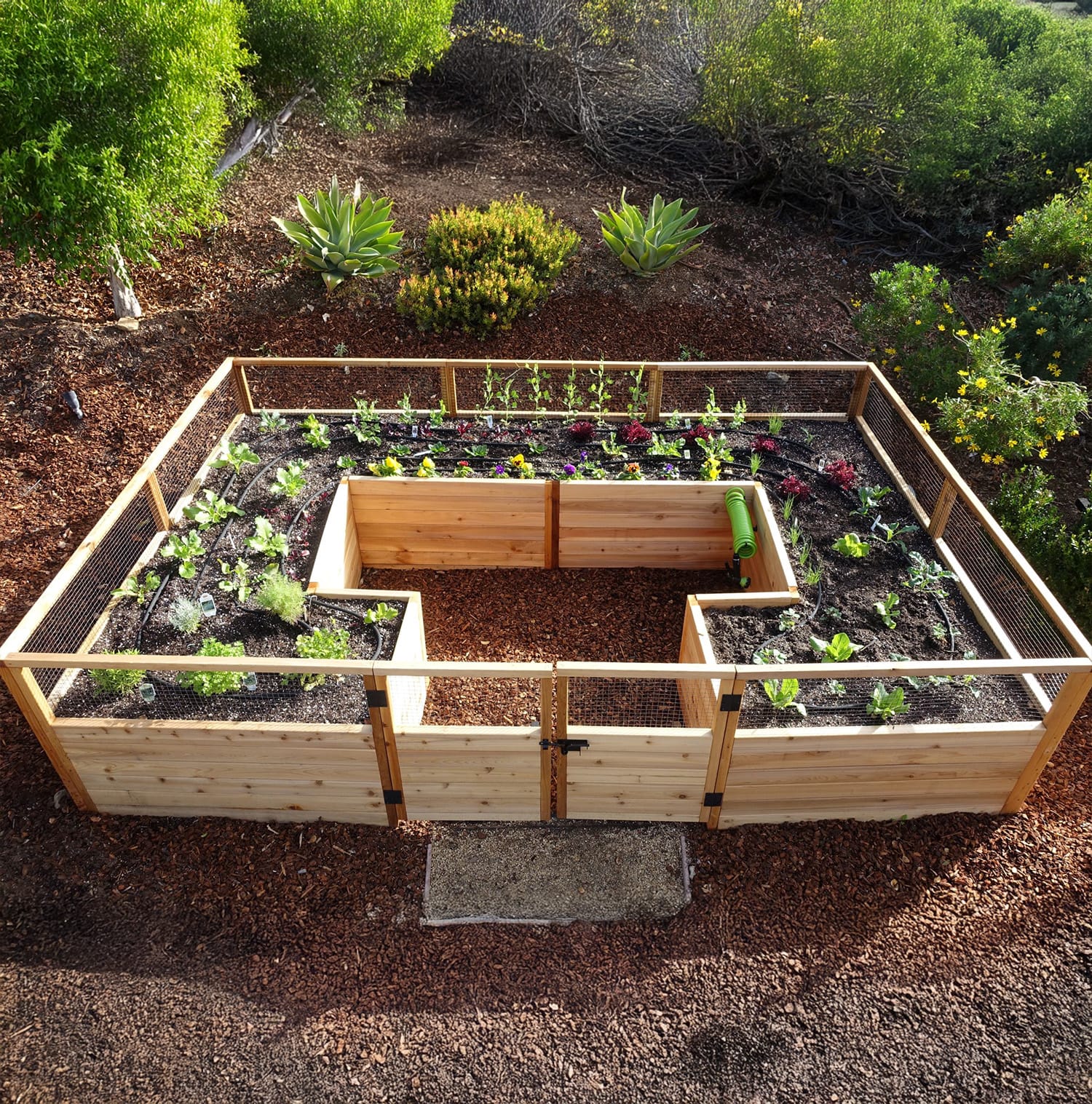
While spring is the time to plant and summer is the time to grow, fall is the time to prepare. As your plants begin to wind down and cooler temperatures take over, now’s your opportunity to set your garden up for long-term success. With the right fall gardening strategy, your spring planting will be easier—and more productive.
1. Walk Your Garden and Inspect Thoroughly
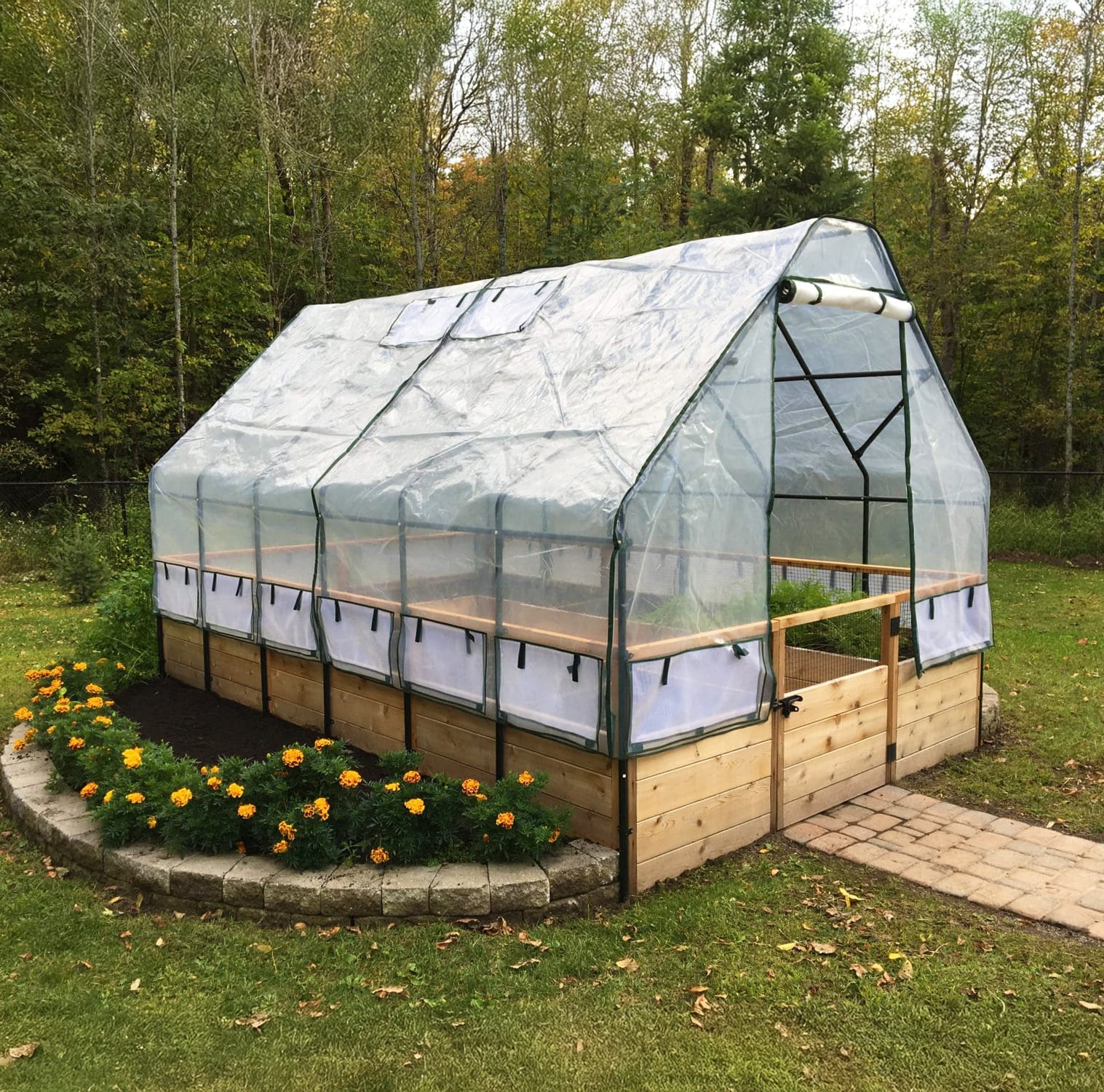
Begin by walking through your garden and making detailed observations:
Look for bare soil patches that may need soil amendments
Identify overgrown plants that require dividing
Tag herbs that should be moved indoors
Note bulbs to dig up and store before the frost hits
This inspection gives you a game plan for fall garden prep and prevents surprises next season.
2. Move Tender Herbs Indoors
Herbs like rosemary, mint, and lavender won’t survive frost. Move potted herbs into a protected spot like a sunny porch or south-facing windowsill to extend your harvest. Bonus: you’ll have fresh herbs handy all winter long.
3. Add Soil Amendments Before Winter
Fall is the ideal time to boost your soil. Add organic fertilizers like:
Compost
Manure
Mulch
Use a garden fork to turn these into the soil. This ensures nutrients are absorbed throughout the winter, improving soil structure and microbial activity. This step reduces spring workload and results in better blooms and harvests.
For larger areas like a kitchen garden:
Till the soil to remove roots and weeds
Add amendments generously
Till again to incorporate nutrients deeply
Tilling in fall is easier and more effective than waiting for soggy spring conditions.
4. Apply Weed Control
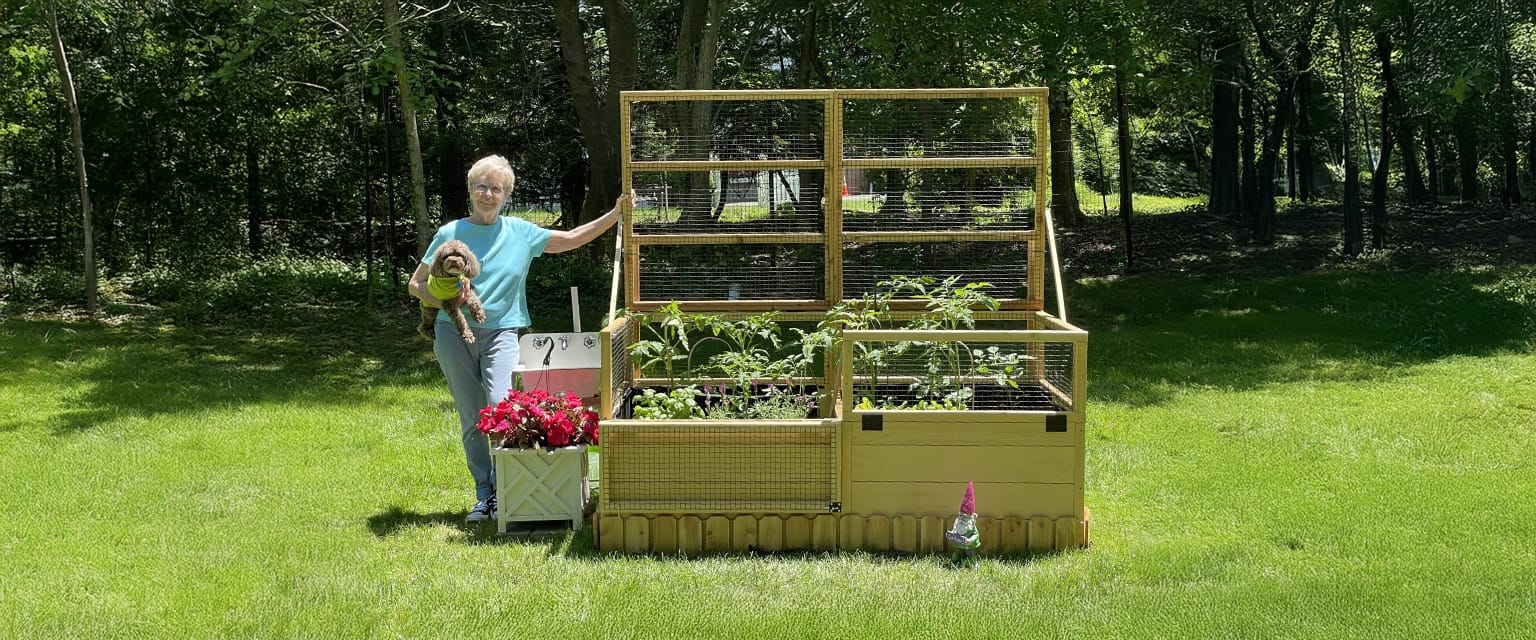
Weeds don’t rest. Apply a fall weed killer to your lawn to stop seeds dropped during summer from sprouting in spring.
Pet tip: If you use chemical weed killers, keep pets inside for a few hours until the product settles into the soil.
5. Collect Seeds for Next Season
If you’re growing heirloom varieties, now is the time to save seeds:
Allow a few flowers or fruits to fully mature or dry on the plant
Harvest and soak fruit in water to remove pulp
Dry and label seeds before storing in a cool, dry place
This preserves your favorite plants and saves money on seeds next year.
6. Empty Rain Barrels
Avoid cracked barrels! Drain and clean out your rainwater storage system before the first frost. Detach pipes and tubes, and let it fully dry to prevent winter damage.
7. Clear Mulch Away from Stems
Too much mulch near stems and trunks can lead to mold and mildew during cool, damp fall conditions. Gently clear mulch away from:
Shrubs
Perennials
Tree bases
This reduces moisture traps and promotes healthier plants.
8. Examine and Prune Perennials
Check all perennials for signs of disease:
Look for black spots, wilting, or rot
Prune affected areas or remove the plant entirely to prevent spread
Don’t compost diseased plants—dispose of them in the trash to protect your garden.
9. Check Trees for Dangerous Branches
Fall is a great time to inspect tree limbs:
Look for cracks, rot, or hollow areas
Schedule safe removal of unstable branches
This protects your home, pets, and people from falling limbs during storms or snow.
Get a Head Start on Spring
A well-prepared fall garden sets the stage for a low-maintenance, high-yield spring. By completing these fall garden tasks now, you’re making sure your soil is nourished, your tools are ready, and your plants are protected.

Want more backyard gardening tips? Browse our blog for seasonal advice, or contact us directly for help creating your ideal outdoor space with Outdoor Living Today.
Light Up the Night: Garden Lighting That Enhances Ambience and Function
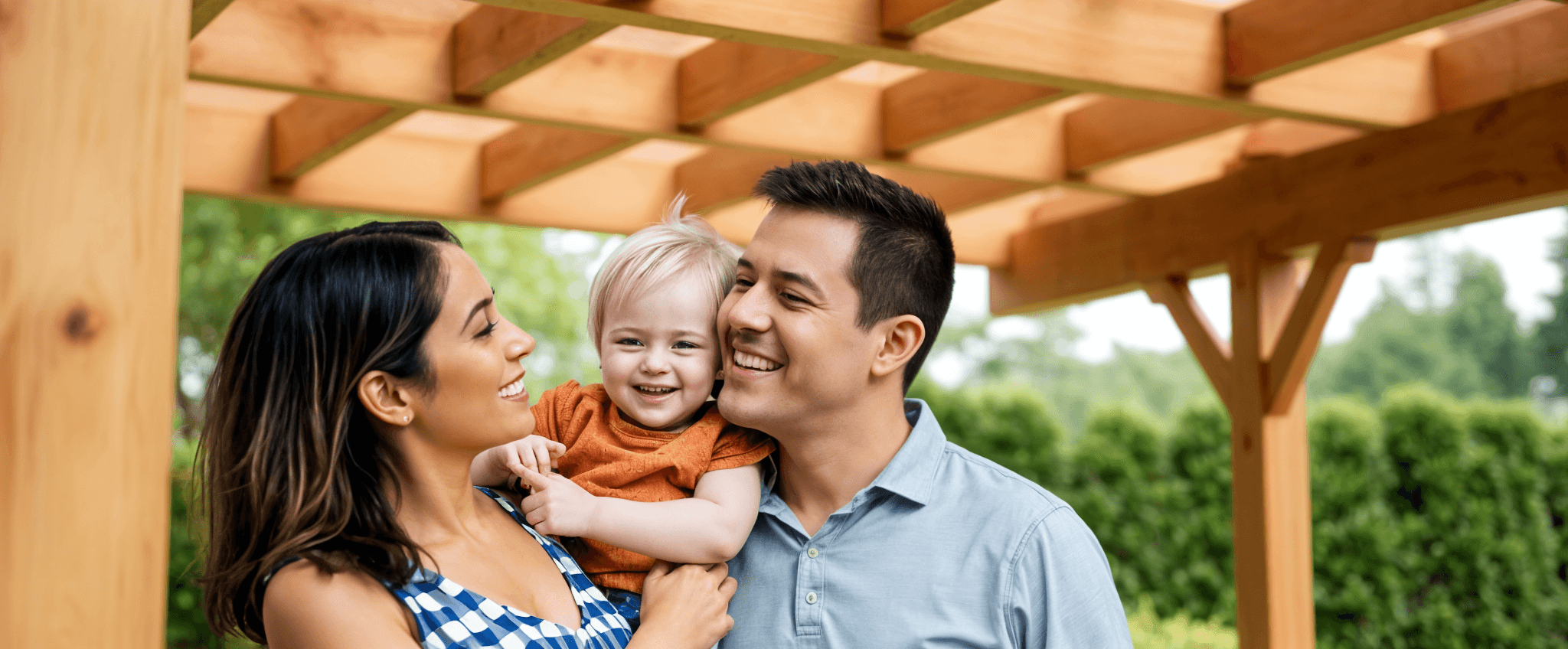
Spending time in the garden doesn’t have to end at sunset. With the right outdoor lighting setup, you can enjoy your backyard well into the evening. Whether it’s quiet family time or a lively get-together with friends, garden lighting adds safety, mood, and functionality.
Outdoor Candle Lanterns: Simple, Stylish, and Soothing
Candle lanterns are a timeless and affordable way to add glow to your garden. Choose scented candles with citronella oil to keep bugs at bay while creating a cozy atmosphere. Place them in:
Glass holders to protect the flame from wind
Colored or frosted lanterns for a whimsical touch
Hanging rope lanterns from branches or hooks for a fairy-tale effect
Their flickering flames create beautiful shadows and drama, making your garden come alive at night.
Battery-Operated Lights: Flexible and Functional
Battery-powered lights are perfect for areas where hardwiring isn’t practical. Place them in:
Arbors and trellises
Remote corners of the yard
Pathway edges for safer navigation
They’re especially useful in larger backyards where you only need occasional illumination in certain areas.
Outdoor String Lights: Festive and Functional

Outdoor string lights are a must-have for dining areas, patios, or pergolas. Draped overhead or along fences, they provide ample ambient light while adding charm and character to any evening gathering.
Tip: Use warm white bulbs for a cozy feel or colorful LEDs for a party-ready vibe.
Outdoor Light Fixtures for Safety and Utility
Just like indoor lighting, outdoor spaces benefit from layered lighting. Consider:
Task lighting over barbecues and food prep areas
Pendant or hanging lights over outdoor dining tables
Step or post lights along paths and stairs
Choose lights with weather-resistant finishes and dimmer capabilities to adapt to various occasions.
Landscape Lighting: Highlight What Matters
Use spotlights or floodlights to showcase:
Trees and shrubs
Water features like fountains or ponds
Garden sculptures or focal points
Colored LED landscape lighting can create stunning effects and emphasize your garden’s best features after dark.
Pool and Water Feature Lighting
Got a pool or waterfall? Install submersible lights to create shimmer and motion in water at night. Be sure these installations are handled by a certified electrician, especially when local electrical codes apply.
Patio and Deck Lighting: Extend Your Living Space
Blend functional and ambient lighting around patios and decks with:
Recessed lights in stairs or deck boards
Wall sconces near doors or seating areas
Dimmer-enabled string lights or sconces for mood flexibility
Your deck or patio can double as a living room when properly lit, offering another reason to stay outside longer.
Final Thoughts: Outdoor Lighting for Every Garden
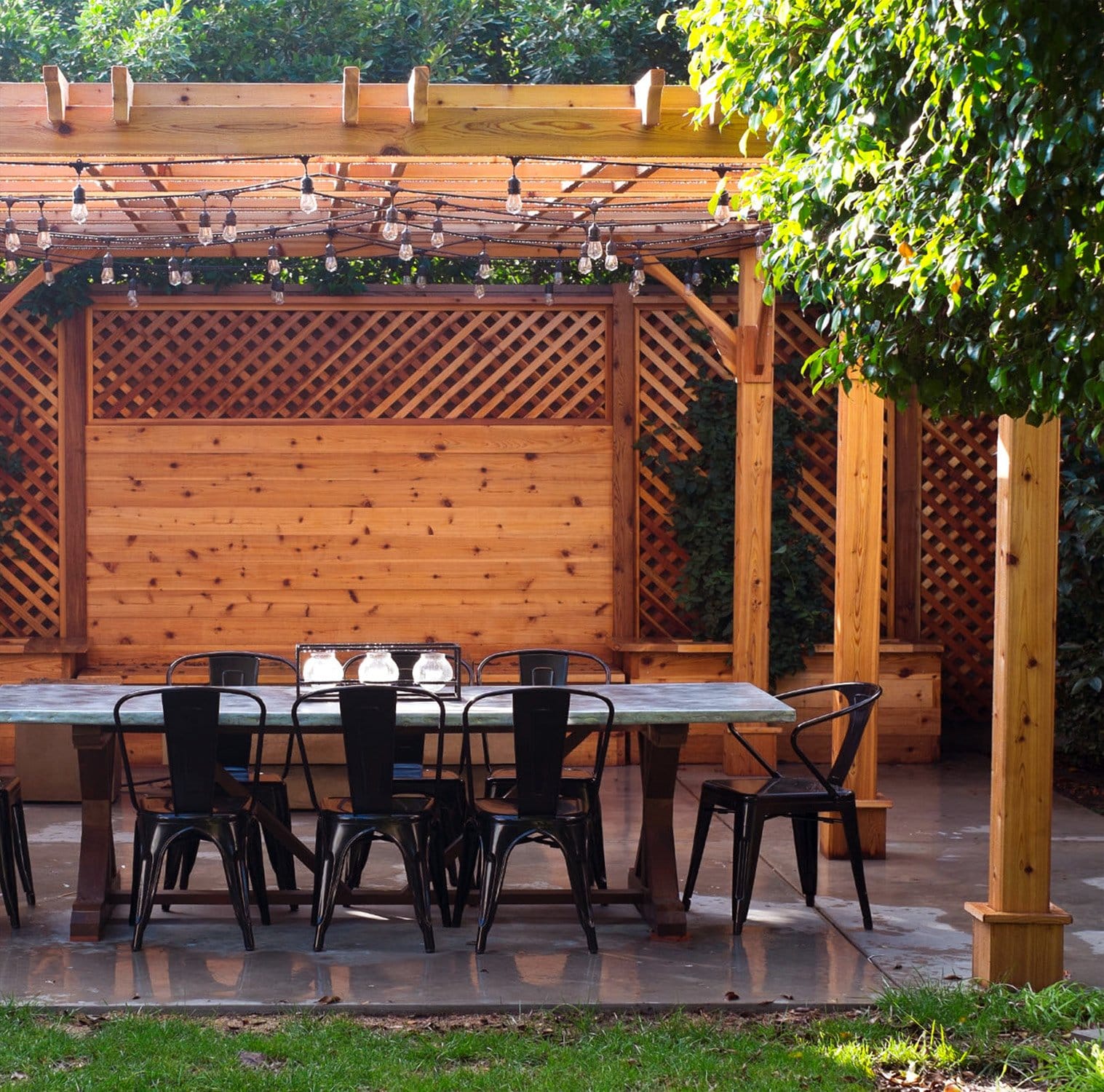
Whether you’re looking to create a romantic atmosphere, keep your walkways safe, or host nighttime dinners with friends, garden lighting brings beauty and practicality together. With a thoughtful blend of lanterns, string lights, and landscape fixtures, you can enjoy your outdoor space long after sunset—no matter the season.
Create a Backyard Fort Playhouse That Fuels Your Child’s Imagination
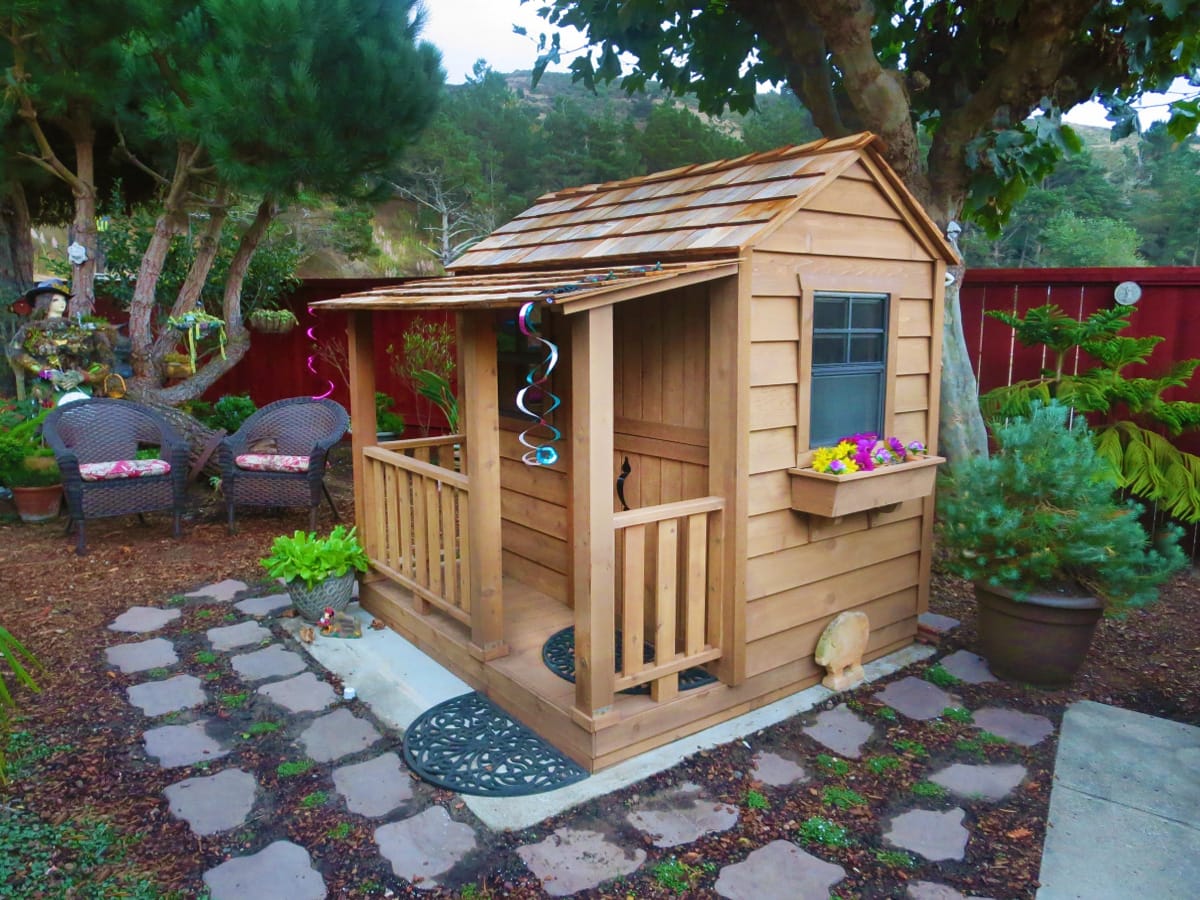
Remember how magical it was to have a secret fort as a kid? That cozy hideout where only you and your closest friends were allowed? Forts spark a sense of adventure, creativity, and freedom—and your child can experience all that and more with a backyard fort playhouse.
Whether you build one from scratch or opt for a ready-to-assemble kit, an outdoor playhouse gives kids their own space to dream, play, and grow.
Why Every Kid Deserves a Fort
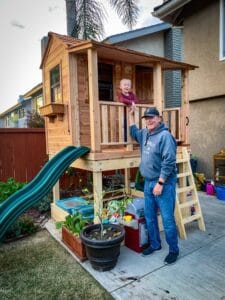
Outdoor playhouses offer much more than just fun. They foster:
Imaginative play
Creative thinking
Independent exploration
Social bonding with friends and siblings
From defending a castle to hosting a tea party, the stories kids tell in their forts become the foundation of lifelong memories.
Design Essentials for a Fort Playhouse
Before building or buying your playhouse, consider these key elements:
• Keep It Cozy
Forts should feel snug and secure. A smaller footprint (room for 2-3 kids) creates a better hideout atmosphere. Include a door, a few small windows, and low walls for safety and visibility.
• Decor and Furnishings
Let your child help decorate their new space. Add a DIY flag, soft rug, cozy chair, or storage trunk that doubles as a bench. Glow sticks or battery-powered lights add a warm, mysterious vibe. Make sure everything is durable enough to withstand the elements.
• Hidden Entry Points
Want to up the mystery? Install a secret entrance behind shrubs or trees, or create a crawlspace tunnel with a low door that only kids can access.
Fort Playhouse Materials: What Works Best?
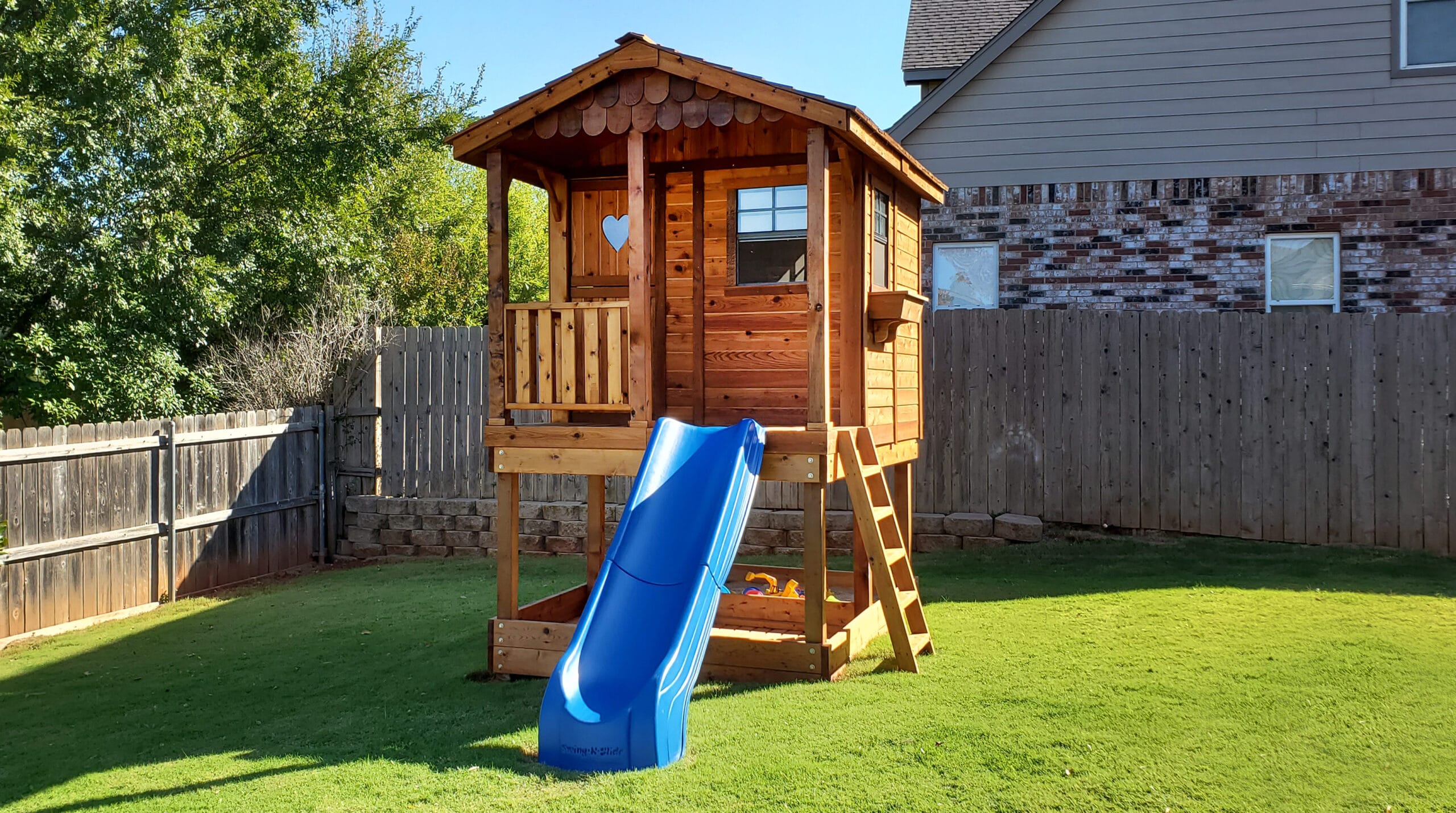
While plastic or vinyl structures exist, wooden playhouses are ideal for outdoor settings. Cedar, especially Western Red Cedar, is the top choice because:
It’s naturally resistant to rot and decay
It smells wonderful and repels pests
It blends beautifully into natural surroundings
You can build your own fort using pallets or timber, or choose a pre-designed playhouse kit from Outdoor Living Today made from high-quality cedar.
DIY Pallet Fort: A Fun Family Project
Want to build it yourself? Here’s a basic plan using wooden pallets:
Lay down 1–2 pallets for the floor (use OSB for a smoother surface)
Stand other pallets vertically to create walls, then screw into the base
Sand down splinters for child safety
Build the roof frame with 2x4s and galvanized panels for waterproofing
Add fun accessories like flags, glow sticks, or toy storage bins
This is a great weekend project for parents and kids to tackle together!
Kits vs. Custom Builds: Which Is Right for You?
| Option | Pros | Cons |
|---|---|---|
| DIY From Scratch | Custom design, creative bonding experience | Requires tools, skills |
| Professional Build | Perfect fit and pro finish | Expensive |
| Cedar Kit (Best Value) | Easy assembly, comes with all hardware | Less customization |
Our recommendation: choose a cedar kit if you want something fast, sturdy, and child-friendly. Browse our playhouse kits for durable options that ship across North America.
Give the Gift of Adventure
An outdoor fort playhouse is more than just a structure—it’s a space for growth, storytelling, and freedom. Whether they’re hiding from dragons, reading a book in solitude, or dreaming up their next big idea, your child will benefit immensely from having their own space outside.
Add some shrubs around the fort for privacy, or let climbing plants create a natural green curtain. Whatever you do, just make it theirs.
Ready to give your child a magical backyard escape?
Explore Outdoor Living Today’s wooden playhouse kits and let the adventure begin!




